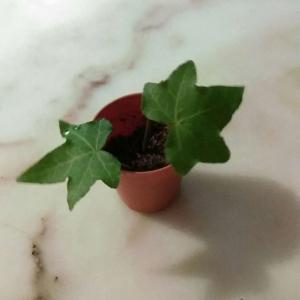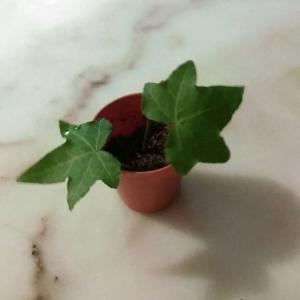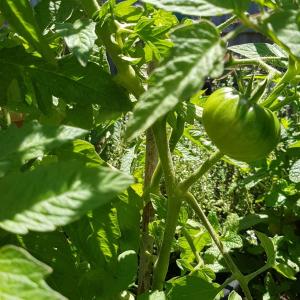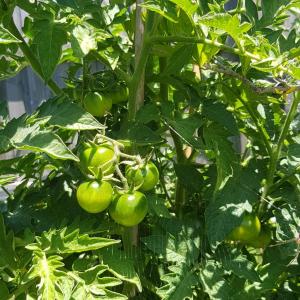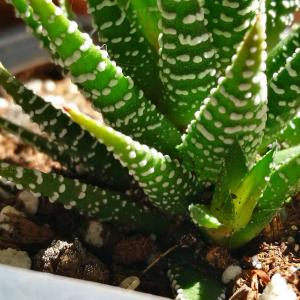文章
Miss Chen
2017年11月25日

If you have a vegetable garden or are thinking of starting one, tomatoes (Lycopersicon esculentum) are likely on your list of plants to grow. If you're looking for a variety that has flavorful, all-purpose fruits, a tomato called "Better Boy" could be the perfect choice. An indeterminate plant that keeps growing all season long, this plant thrives in strong light and good garden soil, with just a little extra care ensuring a heavy yield. Tomatoes are grown as annuals in all parts of the United States.

Planting Seedlings
Sow "Better Boy" seeds indoors about six or eight weeks before you expect outdoor temperature to stay above 45 degrees Fahrenheit at night, using moist sterile potting soil or soil-less mix. Cover seeds with 1/8 inch of mix and, once seedlings appear, keep them in a sunny spot or under fluorescent grow lights. You can also buy seedlings at a garden center but, in either case, harden plants off for a week or two by gradually increasing their exposure to outdoor air and light.
Space "Better Boy" seedlings 2 to 3 feet apart , with 4 feet between rows. Remove the bottom two leaves from each plant and plant in a deep hole, so that these leaf nodes are covered by soil. Planting deep encourages rooting from the stem, making a well-seated plant.
Sun, Soil and Water
"Better Boy" tomatoes thrive and fruit heavily when grown in a spot that gets full sun, with six hours of sun a minimum for good results. They also need fertile soil. When planting, add 2 or 3 inches of compost to the bottom of each hole, along with a handful of bonemeal. Tomatoes also need magnesium for a good start; add 1 teaspoon of Epsom salts to each hole to provide this mineral.
Water the seedlings in well and then water evenly during the season, aiming for about 1 inch of water each week, including rain. To prevent fungal problems, water early on sunny days so plants dry quickly, and use a soaker hose or drip irrigation to help keep foliage dry.
Feeding and Pruning
It takes about 70 days to get the first ripe "Better Boy" tomatoes, but feeding the plants is important for a good harvest. Start fertilizing when the first fruits are about 1 inch in diameter, and then feed again when harvest begins. Use a low-nitrogen formula such as 5-10-5, side-dressing each plant with about 1/2 cup of the granular fertilizer, but turn the fertilizer into the soil gently to avoid disturbing roots.

"Better Boy" is an indeterminate variety that grows all season long, so it benefits from pruning to maximize fruiting and keep its size under control. As the plant grows, allow only one or two main stems to grow and remove suckers -- shoots appearing where each leaf originates -- to funnel the plant's energy into fruiting, using shears that you wipe with rubbing alcohol between cuts to prevent spread of disease. Also, help the plant produce the last ripe fruits by cutting back its fruitless top near the end of summer.
Support and Possible Problems
"Better Boy" is a heavy producer, with individual fruits weighing up to 1 pound each, so they benefit from support while growing. Either drive a sturdy stake into the ground, using soft ties to attach the stem to the stake at intervals, or use a commercial tomato cage for support, tying the plant to its wire as needed.
These plants are susceptible to fungal disorders and fruit cracking, but ensuring constant, even moisture and giving plants lots of space in well-drained soil helps avoid these problems. They can attract pests such as large green hornworms and striped potato beetles, which can be hand-picked, and aphids, which are best controlled by washing plants with a strong water stream.

Planting Seedlings
Sow "Better Boy" seeds indoors about six or eight weeks before you expect outdoor temperature to stay above 45 degrees Fahrenheit at night, using moist sterile potting soil or soil-less mix. Cover seeds with 1/8 inch of mix and, once seedlings appear, keep them in a sunny spot or under fluorescent grow lights. You can also buy seedlings at a garden center but, in either case, harden plants off for a week or two by gradually increasing their exposure to outdoor air and light.
Space "Better Boy" seedlings 2 to 3 feet apart , with 4 feet between rows. Remove the bottom two leaves from each plant and plant in a deep hole, so that these leaf nodes are covered by soil. Planting deep encourages rooting from the stem, making a well-seated plant.
Sun, Soil and Water
"Better Boy" tomatoes thrive and fruit heavily when grown in a spot that gets full sun, with six hours of sun a minimum for good results. They also need fertile soil. When planting, add 2 or 3 inches of compost to the bottom of each hole, along with a handful of bonemeal. Tomatoes also need magnesium for a good start; add 1 teaspoon of Epsom salts to each hole to provide this mineral.
Water the seedlings in well and then water evenly during the season, aiming for about 1 inch of water each week, including rain. To prevent fungal problems, water early on sunny days so plants dry quickly, and use a soaker hose or drip irrigation to help keep foliage dry.
Feeding and Pruning
It takes about 70 days to get the first ripe "Better Boy" tomatoes, but feeding the plants is important for a good harvest. Start fertilizing when the first fruits are about 1 inch in diameter, and then feed again when harvest begins. Use a low-nitrogen formula such as 5-10-5, side-dressing each plant with about 1/2 cup of the granular fertilizer, but turn the fertilizer into the soil gently to avoid disturbing roots.

"Better Boy" is an indeterminate variety that grows all season long, so it benefits from pruning to maximize fruiting and keep its size under control. As the plant grows, allow only one or two main stems to grow and remove suckers -- shoots appearing where each leaf originates -- to funnel the plant's energy into fruiting, using shears that you wipe with rubbing alcohol between cuts to prevent spread of disease. Also, help the plant produce the last ripe fruits by cutting back its fruitless top near the end of summer.
Support and Possible Problems
"Better Boy" is a heavy producer, with individual fruits weighing up to 1 pound each, so they benefit from support while growing. Either drive a sturdy stake into the ground, using soft ties to attach the stem to the stake at intervals, or use a commercial tomato cage for support, tying the plant to its wire as needed.
These plants are susceptible to fungal disorders and fruit cracking, but ensuring constant, even moisture and giving plants lots of space in well-drained soil helps avoid these problems. They can attract pests such as large green hornworms and striped potato beetles, which can be hand-picked, and aphids, which are best controlled by washing plants with a strong water stream.
0
0
文章
Miss Chen
2017年11月24日

A vegetable garden isn't complete without a tomato plant (Lycopersicon esculentum) or two, if only for the pleasure of fresh tomatoes in midsummer. Even if you don't have the space for a large garden, tomato plants are suited to container gardening. Which means that if you have a 5-gallon bucket or two hanging around, you have the makings for a tomato garden.

Preparing the Buckets
Wash and sterilize buckets, even if they're new, with a solution of 2 tablespoons household bleach in 1 gallon of water, and allow them to air-dry. Drill 1/4- to 1/2-inch holes on the lower edge of the bucket for drainage, spacing them about 2 inches apart all the way around. Place a 2-inch layer of coarse gravel or small stones in the bottom to prevent water from pooling, should the holes get plugged with soil.
Soil Choices
Growing mixes specifically designed for tomatoes go a long way toward minimizing the risk of soil-borne diseases, and provide the right conditions for proper root development. Not all potting soils are alike: Some are dense and wet, while others are fluffy but low in nutrients. Your best bet is to make your own, using equal parts potting soil, sphagnum or peat moss, and well-aged compost or manure. Fill the buckets to halfway and set aside the extra soil to fill in around the plants.
Planting Properly
Dig a hole in the center of the growing mix to equal the size of the seedling's roots. Set it gently into the hole and bring the soil around the base of the stem. Add more soil until it comes up to just below the seedling's lowest leaves and pat gently. Fertilize with a starter solution of 3 to 4 tablespoons of an 8-8-8 blend in 1 gallon of water, adding no more than 1 cup of the mixture to each plant. Fertilize again when the fruit appears, and every four to six weeks through the growing season.
Support Systems
Tomato plants can get top-heavy once the fruit starts to set. Install support in the form of a stake or a tomato cage into the bucket right after planting. Poke the stake into the soil about 2 inches from the plant so you don't injure the roots. As the plant grows, attach it loosely to the stake with gardening twine or tomato clips. Insert a tomato cage into the soil up to the bottom rungs, and tuck the branches in as the plant grows.

General Care
Buy seedlings from a garden center, or start your own indoors in early spring. Transfer them outside when they are about 4 to 6 inches tall and when it is at least 50 degrees Fahrenheit with no chance of frost. Place the buckets in a sunny spot, and inspect your tomato plants routinely for signs of fungal disease. Symptoms include dark, dead plant tissue, spots on the leaves and fruit, and fuzzy mildews on leaves and stems. Treat the plants with a solution of 1/2 to 2 ounces of liquid copper and 1 gallon of water, or according to label instructions. Spray all parts of the tomoatoes, including both sides of the leaves, when the disease appears, and every seven to 10 days until symptoms disappear.

Preparing the Buckets
Wash and sterilize buckets, even if they're new, with a solution of 2 tablespoons household bleach in 1 gallon of water, and allow them to air-dry. Drill 1/4- to 1/2-inch holes on the lower edge of the bucket for drainage, spacing them about 2 inches apart all the way around. Place a 2-inch layer of coarse gravel or small stones in the bottom to prevent water from pooling, should the holes get plugged with soil.
Soil Choices
Growing mixes specifically designed for tomatoes go a long way toward minimizing the risk of soil-borne diseases, and provide the right conditions for proper root development. Not all potting soils are alike: Some are dense and wet, while others are fluffy but low in nutrients. Your best bet is to make your own, using equal parts potting soil, sphagnum or peat moss, and well-aged compost or manure. Fill the buckets to halfway and set aside the extra soil to fill in around the plants.
Planting Properly
Dig a hole in the center of the growing mix to equal the size of the seedling's roots. Set it gently into the hole and bring the soil around the base of the stem. Add more soil until it comes up to just below the seedling's lowest leaves and pat gently. Fertilize with a starter solution of 3 to 4 tablespoons of an 8-8-8 blend in 1 gallon of water, adding no more than 1 cup of the mixture to each plant. Fertilize again when the fruit appears, and every four to six weeks through the growing season.
Support Systems
Tomato plants can get top-heavy once the fruit starts to set. Install support in the form of a stake or a tomato cage into the bucket right after planting. Poke the stake into the soil about 2 inches from the plant so you don't injure the roots. As the plant grows, attach it loosely to the stake with gardening twine or tomato clips. Insert a tomato cage into the soil up to the bottom rungs, and tuck the branches in as the plant grows.

General Care
Buy seedlings from a garden center, or start your own indoors in early spring. Transfer them outside when they are about 4 to 6 inches tall and when it is at least 50 degrees Fahrenheit with no chance of frost. Place the buckets in a sunny spot, and inspect your tomato plants routinely for signs of fungal disease. Symptoms include dark, dead plant tissue, spots on the leaves and fruit, and fuzzy mildews on leaves and stems. Treat the plants with a solution of 1/2 to 2 ounces of liquid copper and 1 gallon of water, or according to label instructions. Spray all parts of the tomoatoes, including both sides of the leaves, when the disease appears, and every seven to 10 days until symptoms disappear.
1
2








